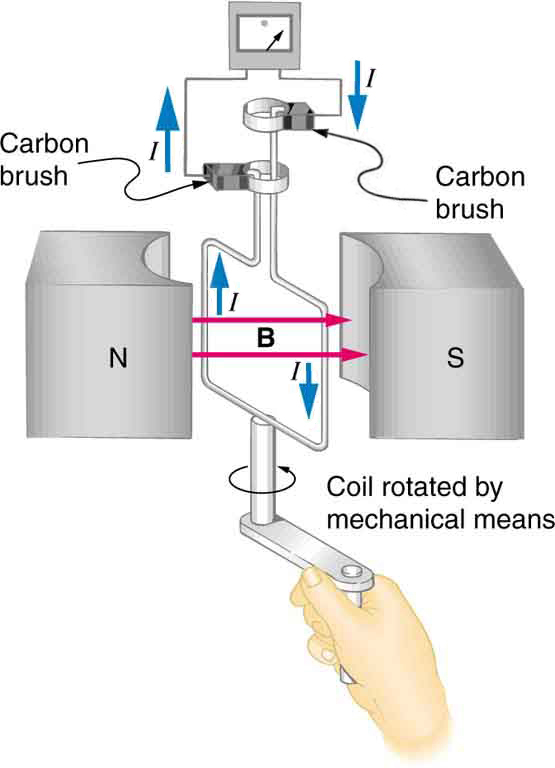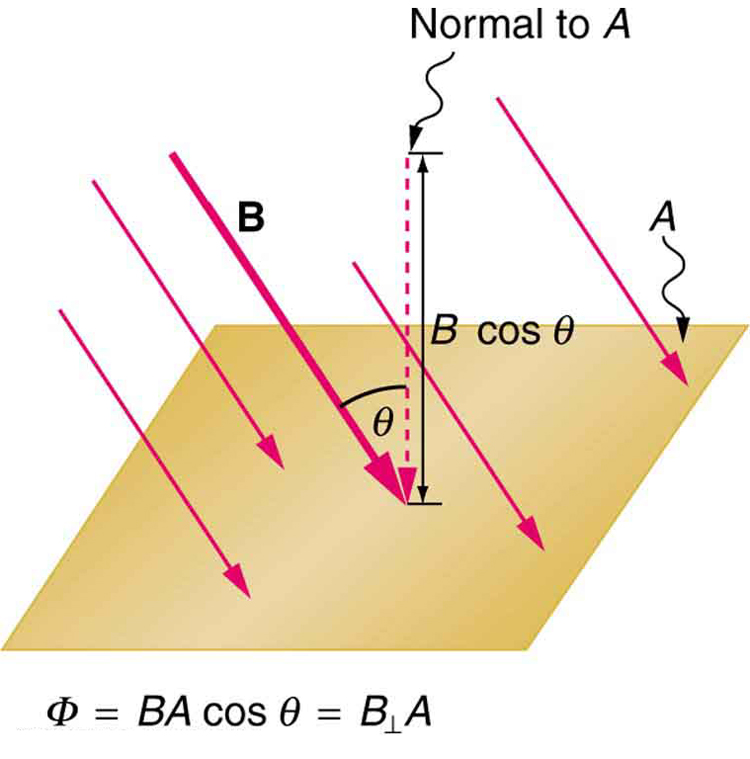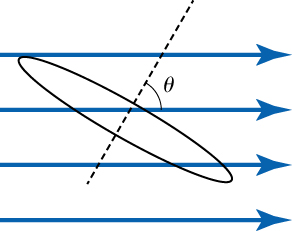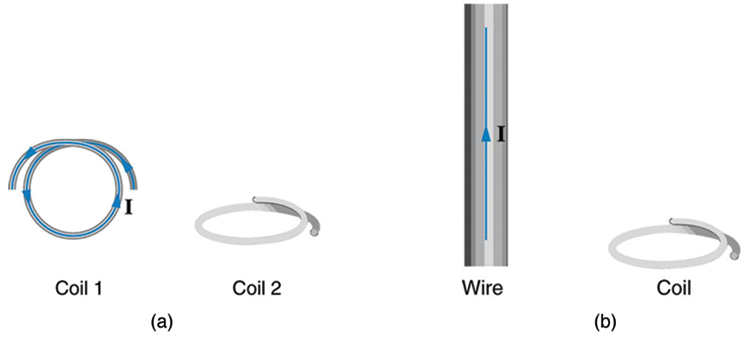| << Chapter < Page | Chapter >> Page > |

So we see that changing the magnitude or direction of a magnetic field produces an emf. Experiments revealed that there is a crucial quantity called the magnetic flux , , given by
where is the magnetic field strength over an area , at an angle with the perpendicular to the area as shown in [link] . Any change in magnetic flux induces an emf. This process is defined to be electromagnetic induction . Units of magnetic flux are . As seen in [link] , ⊥ , which is the component of perpendicular to the area . Thus magnetic flux is , the product of the area and the component of the magnetic field perpendicular to it.

All induction, including the examples given so far, arises from some change in magnetic flux . For example, Faraday changed and hence when opening and closing the switch in his apparatus (shown in [link] ). This is also true for the bar magnet and coil shown in [link] . When rotating the coil of a generator, the angle and, hence, is changed. Just how great an emf and what direction it takes depend on the change in and how rapidly the change is made, as examined in the next section.
To produce current with a coil and bar magnet you can:
(c)

Calculate the magnetic flux for a coil of area 0.2 m 2 placed at an angle of θ =60º (as shown in the figure above) to a magnetic field of strength 1.5×10 -3 T. At what angle will the flux be at its maximum?
How do the multiple-loop coils and iron ring in the version of Faraday’s apparatus shown in [link] enhance the observation of induced emf?
When a magnet is thrust into a coil as in [link] (a), what is the direction of the force exerted by the coil on the magnet? Draw a diagram showing the direction of the current induced in the coil and the magnetic field it produces, to justify your response. How does the magnitude of the force depend on the resistance of the galvanometer?
Explain how magnetic flux can be zero when the magnetic field is not zero.
Is an emf induced in the coil in [link] when it is stretched? If so, state why and give the direction of the induced current.

What is the value of the magnetic flux at coil 2 in [link] due to coil 1?

Zero
What is the value of the magnetic flux through the coil in [link] (b) due to the wire?

Notification Switch
Would you like to follow the 'College physics for ap® courses' conversation and receive update notifications?